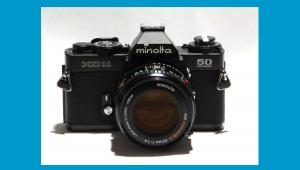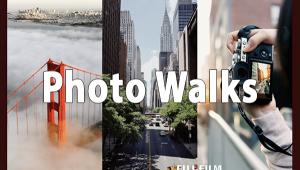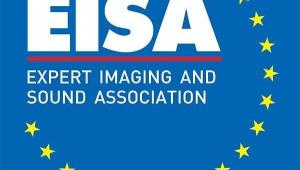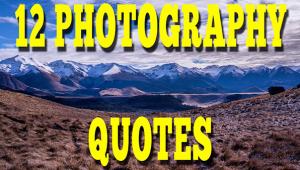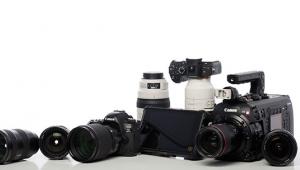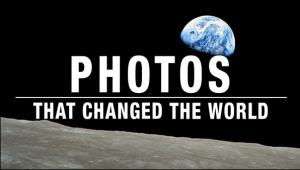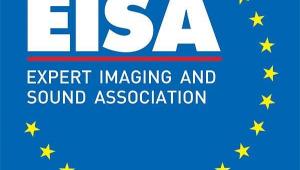photokina 2014: A Look Back at the World’s Largest Imaging Show

All Photos © George Schaub, unless otherwise noted.
Photokina 2014 in Germany has been covered widely on the Internet already—including our own extensive reporting on the show on Shutterbug.com—so there’s no need for me to rehash the major announcements from the event, such as the latest full-frame cameras from Canon and Nikon and the like. My photo report here is aimed at sharing some wider ranging thoughts and perspectives on this important biennial show and what it told us about photography today and where it might be heading tomorrow.
Younger Crowd
If you hesitated to go to photokina in the past because you thought it was mainly a business show—and indeed it once was—the organizers did a bang-up job of filling halls emptied by the shrinking exhibitor lists with photo exhibits, special events, photo ops, and a series of happenings in what they dubbed a “photo community.” All of this drew a decidedly younger crowd from day one, which used to be reserved for strictly business types only.
There was a nonstop schedule for the photo enthusiast and students, including lighting demos, lectures on camera usage and photo history, as well as numerous corners, hallways, and even halls dedicated to photo exhibits, plus a rather incongruous “European bungee” setup in an alley next to a hall where kids were launched three stories high out of a slingshot-like apparatus. Guess you could call it a photo op.
The show included the massive 3000-square-meter Leica Gallery, with a concentration of images of and by musicians, but there were also very incisive and powerful images on wounded war veterans, the struggles of black South Africans against apartheid, and some classic images from the likes of René Burri, Gerd Ludwig, and Thomas Hoepker, who was present for the celebration of his recent book, Wanderlust.
Cologne itself was fairly bursting with photo shows and events, with exhibits in every conceivable venue, as well as the opening of The PhotoBook Museum in another 3000-square-meter space in what seemed like an old factory building. (Google it for more info.) In short, go sometime, it’s worth the trip.


The Rise Of Smartphones And Mirrorless
From conversations and even formal presentations at photokina, there was much wringing of hands about how the smartphone, while creating billions of picture takers, was eating the industry’s lunch, mostly by impacting compact fixed lens cameras and camcorders, although the latter is feeling the heat from “hybrid” DSLRs as well. The answer to this, which seems somewhat obvious, is that from amongst the hordes will arise those who are truly excited about photography and thus will step up into image quality, which means welcome to the camera industry (and Shutterbug readership!).
Another topic was the rise of mirrorless cameras to the detriment of DSLRs, though it must be said that this was mostly pitched by companies with major skin in the mirrorless game. True, mirrorless has posted excellent growth over last year, but one could attribute this to so many companies jumping in, but in point of fact DSLRs still outsell mirrorless by at least 3 to 1. In short, reports about the death of the DSLR have been greatly exaggerated.


New Lingo To Learn
Tech did not slumber at the show and I learned some new lingo in the bargain. One such is the APD designation for a lens. This came up in the announcement of Fujifilm’s 56mm f/1.2 APD, which refers to the presence of an “apodization” filter located pretty much midway between the lens groups. The initial claim was that it added to the bokeh effect, a treatment of highlights much sought after by portrait and, at times, nature photographers.
Well, I thought, this is great: a very fast lens with a bokeh booster and a perfect focal length to boot. However, later, in conversation with Fujifilm tech folks, two matters came to light. One was that the lens actually has an “effective aperture” at and below f/5.6 that cuts the light transmission a bit from the “set” aperture. The other was that the bokeh is actually heightened via contrast, which results in a darkening of the out-of-focus areas, with more darkening the more out of focus the areas are.
For me, bokeh has always been a treatment of bright background highlight areas that gave images an almost ethereal presence. This APD thing was a bit of a turnaround, and while images I saw made with the lens still had a magical touch, it was, well, different, and took some getting used to. The lens also comes bundled with a three-stop ND filter should you want to bokeh it in bright sunlight. Later, poking around the halls I noticed a Sony 135mm STM (stepping motor) lens with a similar APD designation. Will we get copycat APDs from others?
Another take on unique depth-of-field effects is in the new Illum camera from Lytro (announced in July, with the first look at photokina). The Illum’s cumbersome body has a 40 “megaray” sensor and a 30-250mm integral lens that always sits at f/2. A display on the back acts as a normal LCD but also features what a clever Lytro spokesman punned as being a “distogram,” which shows the amount of near and far focus light rays in blue and orange readouts, respectively. During processing you can change the effective aperture of the image from f/1 to f/16, for example, making selective focus in the field a supposed thing of the past.
Aimed more at digital than print display, you can have all sorts of fun with the supplied software and do things to the image that you might have only fantasized about in the past, like touching the image on an iPad and having different depth-of-field effects pop up (if that’s your idea of fun).


Better Electronic Viewfinders
Perhaps it’s the old dog principle, but I have never been a fan or convert to electronic viewfinders (EVF). I never saw the image as sharp enough, it was subject to blooming (flashes of whiteout when you move around the scene and hit a highlight), and, worst of all, the confounding lag and smearing when you changed framing or, heaven forbid, something active should be taking place in front of you.
The reason for all this, of course, was that the EVF showed a “signal” of the image and not a reflection (à la DSLRs) and that, at heart, the resolution was low and the processor in the camera couldn’t keep up with the stream of information it was being asked to handle. It all led up to a WYSINWYG (What You See Is Not What You Get) imaging experience.
Well, at least we now have a euphemism for this, and perhaps a recognition of the problem, and it’s all referred to as “image latency.” And once you have the supposed cure then you can brag that you’ve found it, and that’s what some camera makers finally did at the show.
The RGB dot number has risen, to as much as 2MP in some cases, and there’s now also a measurable stat for the lag, which in some cameras like the Samsung NX1 read out as a five-millisecond “latency.” Will testers now include this in their interminable charts and will we see it in camera company tech specs on their websites? Perhaps, but I still am not sold.
On another interesting viewfinder front, Fujifilm came out with a new camera called the X100T that features what the company calls a “rangefinder focusing option.” In days of old rangefinder focusing had two images superimposed onto one another when you looked into the finder and you turned the focusing ring to make them one and achieved very fine focusing. It took a bit of getting used to, but a generation or more of great photographers used it and got great shots and guess what—there was no autofocus or focus peaking then!
In any case, the Fujifilm version splits the image electronically and moves a portion of the area focused upon into the lower right-hand portion of the frame. You then manually focus to get that view sharp. For me, it beats most manual focus setups in mirrorless cameras. Now, if they would only put a distance marker and a depth-of-field scale on the lens we could really make full use of it.

Courtesy of Fujifilm
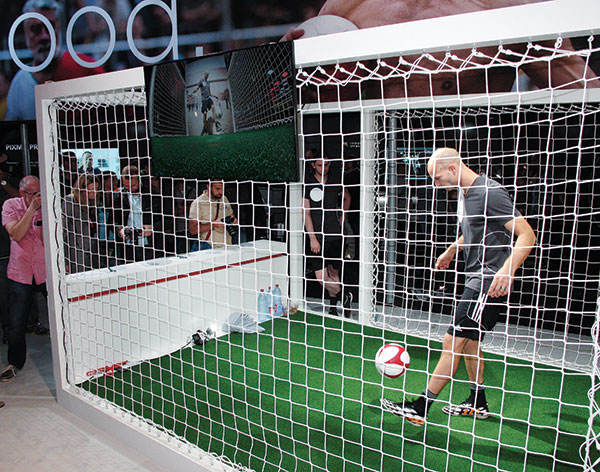
Impressive Lens Tech
Of course the lens is where it all begins, and there was a lot of interesting lens technology to discuss from the show. These included new handshakes between the lens and the image processor, much faster and more coverage for AF, and probably most intriguing, the proliferation of predictive focus improvements.
The phraseology around all this was unique, including Sony’s “4D Focus System” that is said to provide “constant focus throughout space and time,” and Fujifilm’s 0.06-second acquisition time (in the X30), and Samsung’s OIC (Optical Inverse Correction), which is essentially a lens profile being fed automatically to the image processor in the camera to process-correct any aberrations, etc., in camera, which would seem to eliminate the need to do this in post.
Sony’s 4D refers in part to its predictive focus abilities, as does Samsung’s 3D AF, which the company tells us offers predictive phase-detection AF throughout the entire imaging area, with 153 cross-type sensors and 205 phase- and 209 contrast-detection arrays. Goodness.
As to AF and framing rates, the Samsung NX1 has 15 fps with AF and a 60-frame burst at full resolution, with AF acquisition speed at 0.05 seconds (after slight pressure on the shutter release, I should add). To boost their claim Samsung has added an “Auto Sport” mode that they say will be able to track a pitched ball and swing of a bat so that the camera will grab the moment of impact (should the batter connect and both oncoming ball and batter are within the frame). This should, I suppose, also apply to a goal line catch by a tight end on a slant pattern. In any case, sports photographers can turn in their press pass at the front gate, thank you very much.


Courtesy of Fujifilm
4K Frame Grabs: The Future Of Photography?
In the early, early days of digital imaging, every shot was essentially a frame grab, but now it’s back to the future with the touted “4K Photo” wherein you can, as told at Panasonic’s press event, pause at the perfect moment during your 4K video playback and make a still frame grab. It’s suggested that you shoot at 1/8000 sec so you don’t miss a millisecond of the action and then take the time to search the playback for your personal decisive moment. The resultant still image is 8.3MP (24MB for printing fans), but wait…there’s more. When 8K video shows up (around 2020 says the company) you’ll be able to grab a 33MP (100MB) frame.
So, with more cameras now delivering 12 frames per second, and the 4K image grab deal, it seems all you need do is point the camera in the general direction of what’s in front of you and then sort it all out later to figure out what the essence of the moment was, and now is. This is photo retrospection taken to new heights. I have to ask: Does all this miss the point of photography, or am I missing something profound here?
Old Lenses Back In Vogue
If you check the auction sites and flea markets you might notice that older lenses are hot while older camera bodies are not. One reason might be the amazing array of lens to camera mount adapters available for using old glass on previously alien mounts. (Indeed, Shutterbug publisher Ron Leach walked the show with a mirrorless camera with a Contax 35mm lens attached.)
The available matchups are legion, and while you may lose some or all automation (obviously with some lenses, autofocus), and while interested parties may tell you that image quality can suffer, there’s something really enticing about taking an old Summicron and putting it on a current mirrorless camera. It’s actually also a pretty hip thing to do.
There are numerous companies offering these adapters on the Internet, but I am told by those in the know that Novoflex and Kenko are the way to go. (By the way, Kenko also offers optical finders, which might come in handy on an older EVF camera that’s driving you nuts, and even a silicon diode meter for hot-shoe mounting, the use of which fits in well with a new camera announcement, discussed later on in this report.)

Courtesy of Hahnemühle
New Photo Papers
You know I had to check out the new photo papers at the show, and there’s much to report, with trends being metallic and “true” baryta, plus news on the return of what many consider excellent workmanlike papers.
Canson did have a new RC paper, Photo Lustre Premium (310 gsm), an instant-dry type that seemed quite good stock with what I saw as a bit too much warmth for my liking, but this seems to be more akin to European tastes. Their new PhotoArt Pro Canvas (a whopping 395 gsm) is available in rolls only, but is OBA (Optical Brightening Agent) free, made from 100 percent cotton, and is available in matte or luster finish. This was a truly beautiful paper that can be applied equally well for use with portrait and landscape images.
Hahnemühle showed me a number of FineArt Baryta Satin prints, made from a 100 percent alpha-cellulose blend that of course is acid-free and tested to “museum quality” standards. They told me that it can be printed via pigment and dye printers, comes in sheets and rolls, and that ICC profiles are already available on their website. Another stock that caught my eye was their new Canvas Metallic (350 gsm), and its embedded opalescence really shined, discretely of course, under the gallery lighting under which it hung.
Moab’s new Juniper Baryta Rag (305 gsm) is a 100 percent cotton and “true baryta” (barium sulfate) paper with no OBAs. While somewhat warm (typical of OBA-free) it’s not as warm as other “barytas” I saw, and the surface is intriguing, a gloss with a slight texture that makes the image pop. It’s available in cut sheet and roll.
Another stand that caught my eye was the Japanese handmade paper (washi) company Awagami. The images in their booth had a special aura and presence unmatched by others around them. These handmade papers are specially coated for use in inkjet printers and all the materials used, they assured me, are “organic,” acid-free, and pH neutral. They’re distributed in the US by Freestyle and the paper is available in standard cut-sheet sizes, though they will handle special order sizes as well.
Speaking of Freestyle, that’s where those of us in the US can get black-and-white film, paper, and chemicals from FOMA, the Czech firm that has been coating paper and film since 1921. They offer Fomapan film in various speeds, Fomabrom paper that lovers of the old Portriga should check out, and of course the processing chemicals for the above.
And speaking of distributors, I’m happy to report that Ilford inkjet papers are back in play. The Swiss company that had fallen on hard times was bought out by one of its distributors and manufacturing facilities have been moved from Switzerland to Germany to create the full line of past products and new ones to boot, all based, according to the spokesman, on the original recipes. The MAC Group will be handling distribution in the US.

Drones And Copters
You might want to check out the height of your air rights on your deed. A whole slew of new camera-carrying, lightweight copters and drone-type aerial vehicles are coming on the market, and remote control flight has and will send them to places previously unimagined to make images like we’ve never seen before. The videos and stills on display were trippy and dreamlike in some instances, although the commercial uses seem to be mainly shots of yuppies cruising down Highway 101 in a convertible. Despite that, these lightweight flying machines will open up a new class of imaging and a new aspect of the trade for adventuresome photographers. And all you moms who thought that junior was wasting his life away by spending all his time in the basement playing video games with a toggle device will find that they now have a marketable talent as well.


Courtesy of Leica Camera
My Favorite Camera At The Show
I thought I’d end this report with what, for me, was perhaps one of the more surprising and pleasing camera intros at the show. It doesn’t have an LCD, it has no batteries, no in-camera meter, no exposure modes, no drive modes, and certainly there will be no chimping. Well, there is one little aid: a reminder dial for what ISO film you have loaded (look Ma, no DX-code reader!). No, it’s not another Lomo, or some pinhole camera, it’s the Leica M-A, for “analog.” It comes with a Summarit-M 50mm f/2.4 lens, and a helpful box of Kodak Tri-X included. By the way, this is the camera I hinted at when suggesting the Kenko silicon diode slip-on meter might come in handy.
- Log in or register to post comments


